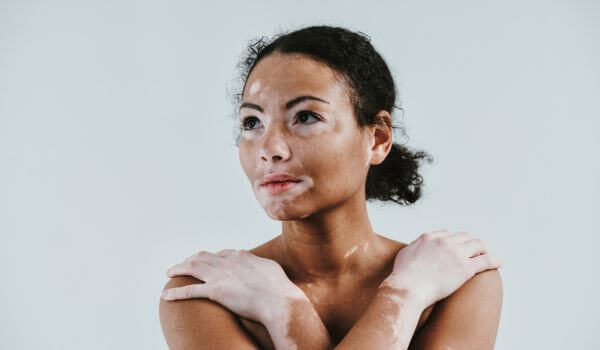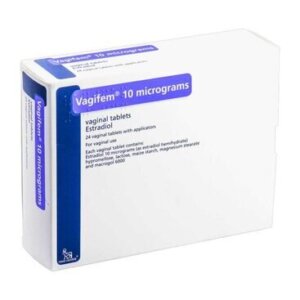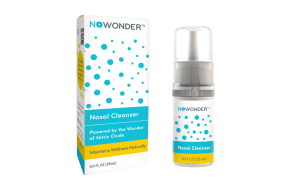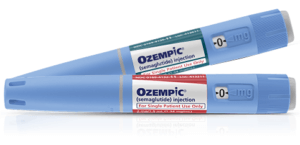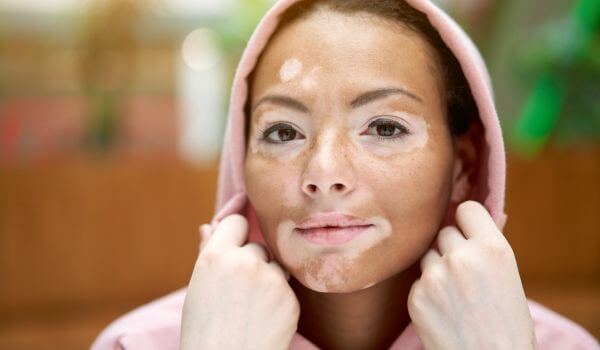 Hyperpigmentation is one of those skin concerns that shows up quietly and often gets misunderstood. Many parents see dark spots on the face or arms of their kids and jump to conclusions, sometimes thinking it’s just dirt, a bruise, or something serious. It’s not unusual for a parent to feel worried or confused, especially when the spots don’t go away quickly. But the truth is, most of the fear around these marks comes from myths that have been passed along without facts to back them up.
Hyperpigmentation is one of those skin concerns that shows up quietly and often gets misunderstood. Many parents see dark spots on the face or arms of their kids and jump to conclusions, sometimes thinking it’s just dirt, a bruise, or something serious. It’s not unusual for a parent to feel worried or confused, especially when the spots don’t go away quickly. But the truth is, most of the fear around these marks comes from myths that have been passed along without facts to back them up.
There are different types of skin discoloration that can affect children and teens. Some are temporary and caused by things like scrapes, acne, or too much sun. Others, like melasma or post-inflammatory hyperpigmentation, can last longer but aren’t dangerous. What makes it tricky is that these conditions can look different depending on a child’s skin tone.
Knowing the real causes of hyperpigmentation can help parents avoid stress and make better decisions. It’s important to understand how sun exposure and skin damage play a role, and why hormonal skin changes or common kids and skin conditions can be part of the picture. Let’s clear up some of the biggest myths so families can feel confident and calm when dark spots show up.
Myth 1: Hyperpigmentation only happens in adults
Many parents believe that kids are “too young” to get hyperpigmentation, but this isn’t true. While it’s more common in adults, children can also experience skin discoloration from conditions such as vitiglio for several reasons:
- Healing from cuts, scrapes, or rashes
- Acne or insect bites that leave marks
- Sun damage from playing outdoors without protection.
Why it matters
If parents think a child’s dark spot is unusual just because of age, they might rush to the wrong treatment, or none at all. It’s helpful to know that kids’ skin can react just like adults’ skin in many cases.
Myth 2: Hyperpigmentation always means there’s an underlying illness
Seeing a dark mark on a child’s skin can feel alarming, but most dark spots on face or arms are harmless. Conditions like melasma, or post-inflammatory hyperpigmentation, often come from things like:
- Friction from clothing or sports gear
- Mild skin inflammation (like eczema or diaper rash)
- Previous breakouts or allergic reactions.
Why it matters
Jumping to conclusions about serious illness can increase anxiety. While it’s always okay to check with a doctor, assuming the worst isn’t necessary when a child’s skin changes.
Myth 3: Hyperpigmentation is permanent
One of the most common worries is, “Is hyperpigmentation permanent?” In many cases, it is not. Children’s skin usually heals well with time, especially if the cause of the irritation is removed. Spots caused by injury or mild inflammation may fade over several weeks or months.
However, some marks, especially from repeated sun damage or hormonal changes, can take longer. Parents may notice the spots fade gradually with:
- Daily use of gentle sunscreen
- Avoiding harsh soaps or scrubs
- Keeping the area moisturized.
Why it matters
Understanding that many dark spots fade can help reduce panic. With patience and protective care, most cases improve without strong treatments.
Myth 4: Sunscreen is only for beach days
This is a dangerous myth. Sun exposure and skin damage are major contributors to hyperpigmentation, even on cloudy days. UV rays can make existing spots darker and slow down healing.
Every child, no matter their skin tone, benefits from sunscreen. It doesn’t need to be a heavy or greasy lotion, many kid-friendly formulas are easy to apply before school or outdoor play.
Why it matters
Knowing that sunscreen does help dark spots is more than just a yes, it’s essential. Regular sunscreen can prevent spots from forming or getting worse, making it one of the easiest tools for healthy skin.
Myth 5: There’s nothing parents can do
It’s easy to feel helpless when a child develops skin changes. But that’s another myth worth busting. While not every kids and skin condition needs a product or a trip to the dermatologist, parents can:
- Keep the skin clean and moisturized
- Use fragrance-free, gentle skincare
- Apply daily sunscreen
- Be patient and avoid over-treating or scrubbing.
Why it matters
Some parents turn to strong creams or home remedies too quickly. Others ignore the issue entirely. The truth is somewhere in the middle: mild, consistent care is often enough.
Summary: What parents really need to know about hyperpigmentation
- Children can get hyperpigmentation, just like adults.
- Dark spots don’t always mean illness, often they come from normal skin reactions.
- Most marks fade over time with gentle care.
- Sunscreen is crucial every day, not just in summer.
- Parents can take simple steps to help without panic.
Frequently asked questions about hyperpigmentation in children
What is the main cause of hyperpigmentation in children and teens?
The most common causes of hyperpigmentation in kids are related to skin inflammation or injury. Things like acne, bug bites, scrapes, and mild eczema can all trigger dark marks. This happens when the skin makes more pigment (melanin) in the healing area. Children with darker skin tones may be more likely to develop noticeable marks. Sun exposure can also make existing spots darker, so daily sunscreen can help reduce the risk of long-lasting discoloration.
Can hyperpigmentation be passed down from parents?
Yes, some children may inherit a tendency toward hyperpigmentation from their parents. If a parent has conditions like melasma or post-inflammatory hyperpigmentation, their child may also have skin that reacts more strongly to injury or inflammation. However, genetics don’t guarantee a child will have the same problem. Environmental factors like sun exposure, skincare habits, and overall health also play a big role in how skin responds.
Is hyperpigmentation permanent or does it go away over time?
In most cases, hyperpigmentation in children is not permanent. Dark spots caused by injuries, acne, or irritation often fade over several weeks or months. However, some marks can take longer, especially if the skin is frequently exposed to sunlight or the area is repeatedly irritated. Using sunscreen and avoiding harsh products can support healing. It’s important to be patient and avoid aggressive treatments, which can make discoloration worse.
Do children need special sunscreen to prevent dark spots?
Children don’t need special sunscreen just for dark spots, but they do need a product that’s made for sensitive skin. Look for sunscreens labeled as “broad-spectrum” with SPF 30 or higher. Many kid-friendly options are available that are easy to apply and gentle on young skin. Applying sunscreen every morning—especially before outdoor play—helps protect the skin and can prevent both new dark spots and darkening of existing ones.
How can parents tell the difference between hyperpigmentation and a rash or bruise?
Hyperpigmentation usually looks like a flat, darker patch of skin that doesn’t hurt or feel raised. It often appears after a scrape, pimple, or skin irritation has healed. In contrast, rashes may be red, itchy, or bumpy, and bruises can be swollen or painful and change colors as they heal. If a spot doesn’t change for a long time, isn’t painful, and came after a skin injury, it’s likely just hyperpigmentation. A doctor can help if there’s uncertainty.
Are over-the-counter creams safe for treating dark spots in kids?
Most over-the-counter creams for dark spots are made for adults and may not be tested for children. Parents should be cautious when using products with strong ingredients like hydroquinone or retinoids. These can irritate sensitive skin or make the problem worse. Instead, focus on gentle care: sunscreen, moisturizing, and patience. If a spot is bothersome or slow to fade, it’s a good idea to ask a doctor before using any strong treatments.
Can diet or stress make hyperpigmentation worse?
While diet and stress don’t directly cause hyperpigmentation, they can affect how the skin heals. Poor nutrition might slow down skin recovery, especially if the body lacks vitamins like C or E. Stress can lead to behaviors that irritate the skin, like scratching or picking at spots. It can also worsen conditions like acne or eczema, which in turn lead to dark marks. A balanced diet and calm routines can help support healthier skin overall.
Is it okay to leave hyperpigmentation untreated in children?
In most cases, it’s perfectly okay to leave hyperpigmentation alone. If the spot isn’t painful, growing, or changing in unusual ways, there’s usually no need for medical treatment. Gentle skin care and regular sun protection can help it fade naturally. Trying to treat it too aggressively can sometimes make it worse. If a parent feels unsure, they can always check with a doctor to make sure there’s nothing else going on.
Are there any approved treatments for hyperpigmentation?
Yes, there are several treatments approved for hyperpigmentation, but most are meant for adults and may not be tested for children. For adults, options can include creams with ingredients like hydroquinone, azelaic acid, or retinoids. These are often used under a doctor’s supervision and help lighten dark patches over time. For kids, doctors usually recommend gentler care, like using sunscreen, keeping skin moisturized, and avoiding irritation. If treatment is needed, a doctor might suggest a mild cream that is safe for sensitive skin. It’s always best to ask a healthcare provider before starting any product on a child’s skin.


